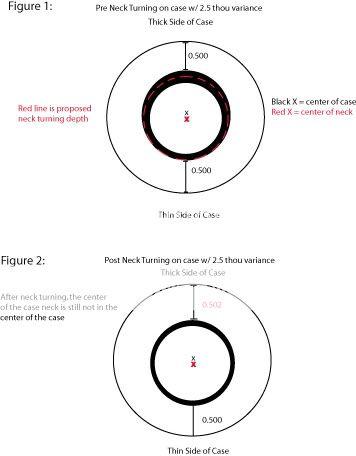[ QUOTE ]
How can a bullet jump evenly from the neck of the brass if the expansion of the brass is uneven from a thick and thin side regardless of how it sits in the chamber? The position of the cartridge in the chamber can be horrid in a factory rifle and will no doubt harm accuracy, but that is and additional problem that will only add to an uneven bullet release. It would be hard to distinguish what is causing what so I guess the bottom line is turn the necks to a consistent thickness, and have a good chamber and that will be your best bet for accuracy. /ubbthreads/images/graemlins/wink.gif
[/ QUOTE ]
GG,
They just don't get it. Either they have not shot guns that will shoot bugholes or they are not advanced enough in their reloading knowledge to recognize that perfect bore alignemnt is ALWAYS preferred to non-perfect bore alignment.
Maybe a few years from now they will be able to appreciate the fact that .001 off of neck thickness will do more good than harm when trying to shoot tiny little holes.
Come on, if they are trying to prove a theory with factory grade barrels chambered with a variety of reamers that are all nearer to max SAAMI specs over a properly fitting reamer for the brass used, then this is a futile attempt to exchange some knowledge with then and to help someone who genuinely wants to squeeze all the accuracy one can get out of a shooting stick. After all, this is LONGRANGE HUNTING and the techniques used in the quest for game at LONG RANGE. This is not a website specializing on how to achieve MOA accuracy. Heck, if my guns won't shoot under .25moa, I am at the range finding out why.
Almost forgot, partial full-length resizing ensures centering of the case in the chamber and turning the necks ensures the case neck is centered with the body of the case and center of the bore. If folks cannot grasp this, then they should reserve opinion and giving advice on loading technches for long range hunting.
James

